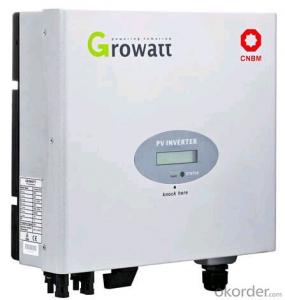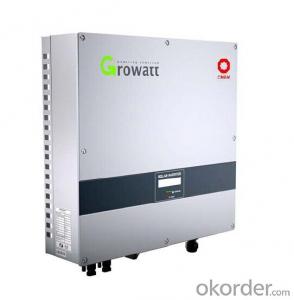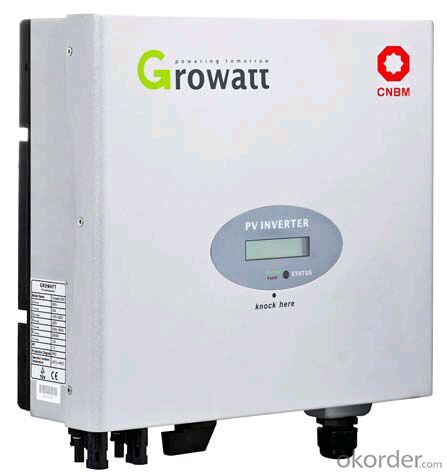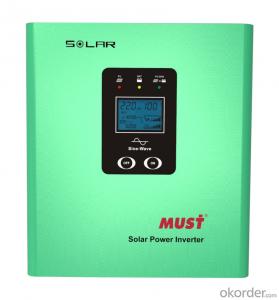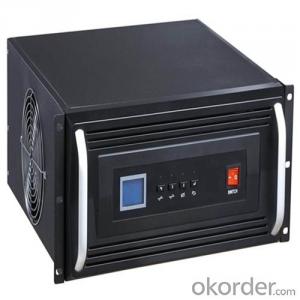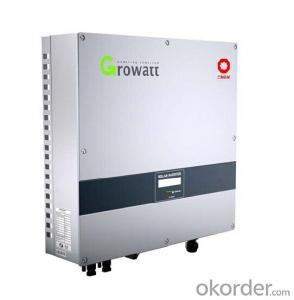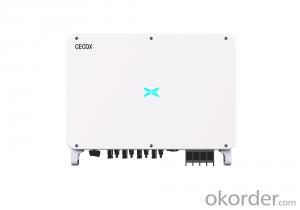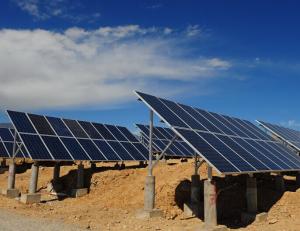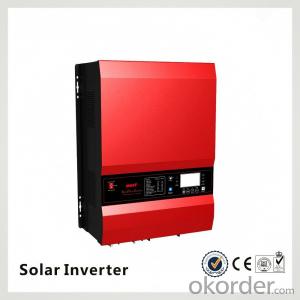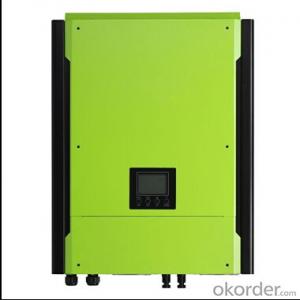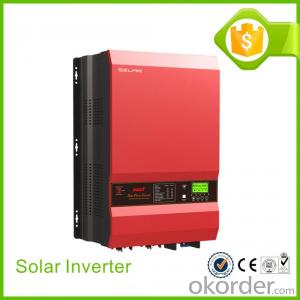Vivint Solar Inverter 3kw On-Grid Inverter with Energy Storage 1kw/2kw/3kw Hybrid Inverter
- Loading Port:
- China main port
- Payment Terms:
- TT OR LC
- Min Order Qty:
- 1000 watt
- Supply Capability:
- 100000 watt/month
OKorder Service Pledge
OKorder Financial Service
You Might Also Like
Introduction
On-grid Inverter with Energy Storage 2kW/3kW hybrid inverter
Pure sine wave output
Microprocessor controlled to guarantee stable charging system
Multiple operations: Grid tie, Off grid, and grid tie with backup
Built-in MPPT solar charger
LCD display panel for comprehensive information
Multiple communication
Green substitution for generators
User adjustable charging current up to 25A
Features
Feed-in is not only choice
In comparison with conventional grid-tie inverter, CNBM-H is able to not only feed-in power to
grid but also store solar power to battery for future usage and directly power to the loads.
Save money by discharging battery for self-consumption first
CNBM-H can save money by using battery energy first when PV energy is low. Until battery
energy is low, CNBM will extract AC power from the grid.
Power backup when AC failed
CNBM-H can operate as an off-grid inverter to provide continuous power even without the grid.
It’s perfect power solution for remote regions or temporary AC power source such as camping or flea market.
Images
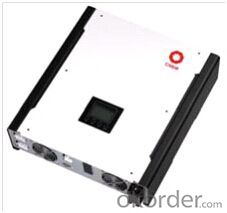

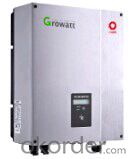

Sepecification
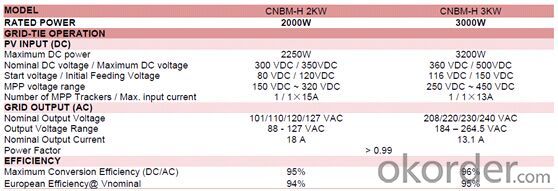
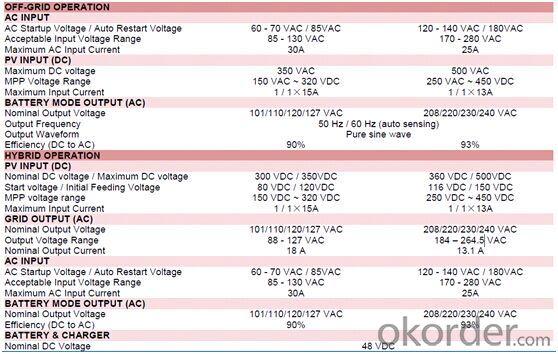
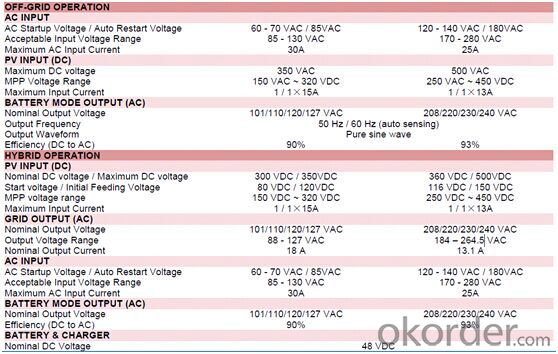
FAQ
Q1: How to choose a right inverter?
A1:Tell us your demand, then our sales will recommend a suitable inverter to you.
Q2: What's the different between inverter and solar inverter?
A2: Inverter is only accept AC input, but solar inverter not only accept AC input but also can connect with solar panel to accept PV input, it more save power.
Q3: How about the delivery time?
A3: 7 days for sample; 25 days for bulk order.
Q4: What is the warranty of inverter?
A4: 5/10 years warranty on CNBM-Solar product.
Q5: How to solve the technical problem?
A5: 24 hours after-service consultancy just for you and to make your problem to solve easily.
- Q: What is the role of an isolation transformer in a solar inverter?
- The role of an isolation transformer in a solar inverter is to provide electrical isolation between the solar panels and the grid. It helps protect the solar panels and the inverter from electrical disturbances, such as voltage spikes or surges, that may occur in the grid. Additionally, the isolation transformer helps mitigate ground fault currents and provides a safety barrier between the grid and the solar system.
- Q: Can a solar inverter be used in harsh environmental conditions?
- Yes, a solar inverter can be used in harsh environmental conditions. Most solar inverters are designed to withstand a wide range of environmental factors such as extreme temperatures, humidity, dust, and vibrations. They are often built with durable materials and have protective coatings to prevent damage from harsh weather conditions. Additionally, many solar inverters are equipped with advanced cooling mechanisms to prevent overheating in hot climates. However, it is important to note that the specific durability and performance of a solar inverter in harsh conditions may vary depending on the brand and model. It is recommended to choose a reliable and high-quality solar inverter that is specifically designed for use in harsh environmental conditions to ensure optimal performance and longevity.
- Q: Can a solar inverter be used with different types of solar panels (monocrystalline, polycrystalline, thin-film)?
- Yes, a solar inverter can be used with different types of solar panels, including monocrystalline, polycrystalline, and thin-film. The key factor is that the solar panels need to have compatible voltage and current ratings with the inverter. As long as the specifications match, the inverter can efficiently convert the DC power generated by any of these solar panel types into usable AC power for various applications.
- Q: How does a solar inverter handle voltage phase imbalance in the grid?
- A solar inverter handles voltage phase imbalance in the grid by continuously monitoring the grid's voltage and frequency. If it detects any phase imbalance, it adjusts its output to balance the voltage across all phases. This ensures that the power generated by the solar panels is synchronized with the grid and prevents any issues that may arise due to phase imbalances, such as equipment damage or power quality issues.
- Q: How does a solar inverter handle grid voltage variations?
- A solar inverter handles grid voltage variations by constantly monitoring the grid voltage and adjusting its output accordingly. It uses complex algorithms to regulate the voltage and frequency of the electricity it feeds into the grid, ensuring it matches the varying grid voltage. This allows the solar inverter to maintain a stable and consistent power output, regardless of any fluctuations in the grid voltage.
- Q: How does a solar inverter handle voltage drop in long cable runs?
- A solar inverter compensates for voltage drop in long cable runs by boosting the voltage to ensure efficient power transmission.
- Q: How does a solar inverter handle temperature variations?
- A solar inverter handles temperature variations by employing various cooling mechanisms such as heat sinks, fans, or liquid cooling systems. These components help dissipate excess heat generated during operation, ensuring the inverter remains within its optimal temperature range. Additionally, advanced inverters are equipped with temperature sensors that continuously monitor the internal temperature and adjust the system's performance to maintain efficiency and protect against overheating.
- Q: How does a solar inverter affect the voltage stability of a solar system?
- A solar inverter plays a crucial role in maintaining voltage stability in a solar system. It converts the direct current (DC) generated by solar panels into alternating current (AC) suitable for use in homes and businesses. By monitoring and adjusting voltage levels, a solar inverter ensures that the power output remains consistent and within acceptable limits. This helps to prevent voltage fluctuations, voltage drops, and other electrical instabilities, ensuring a stable and reliable power supply from the solar system.
- Q: How does a three-phase solar inverter differ from a single-phase inverter?
- A three-phase solar inverter differs from a single-phase inverter in terms of the number of input and output phases it can handle. While a single-phase inverter can only handle a single-phase input and output, a three-phase inverter is designed to handle three-phase input and output. This allows for a more efficient and balanced distribution of power in three-phase electrical systems, making three-phase inverters suitable for larger solar installations or commercial applications.
- Q: Can a solar inverter be used with thin-film solar panels?
- Yes, a solar inverter can be used with thin-film solar panels. Thin-film solar panels have a different structure and composition compared to traditional crystalline silicon panels, but they still generate DC electricity that needs to be converted into AC for use in homes or businesses. A solar inverter is responsible for this conversion process, regardless of the type of solar panels used.
Send your message to us
Vivint Solar Inverter 3kw On-Grid Inverter with Energy Storage 1kw/2kw/3kw Hybrid Inverter
- Loading Port:
- China main port
- Payment Terms:
- TT OR LC
- Min Order Qty:
- 1000 watt
- Supply Capability:
- 100000 watt/month
OKorder Service Pledge
OKorder Financial Service
Similar products
Hot products
Hot Searches
Related keywords
